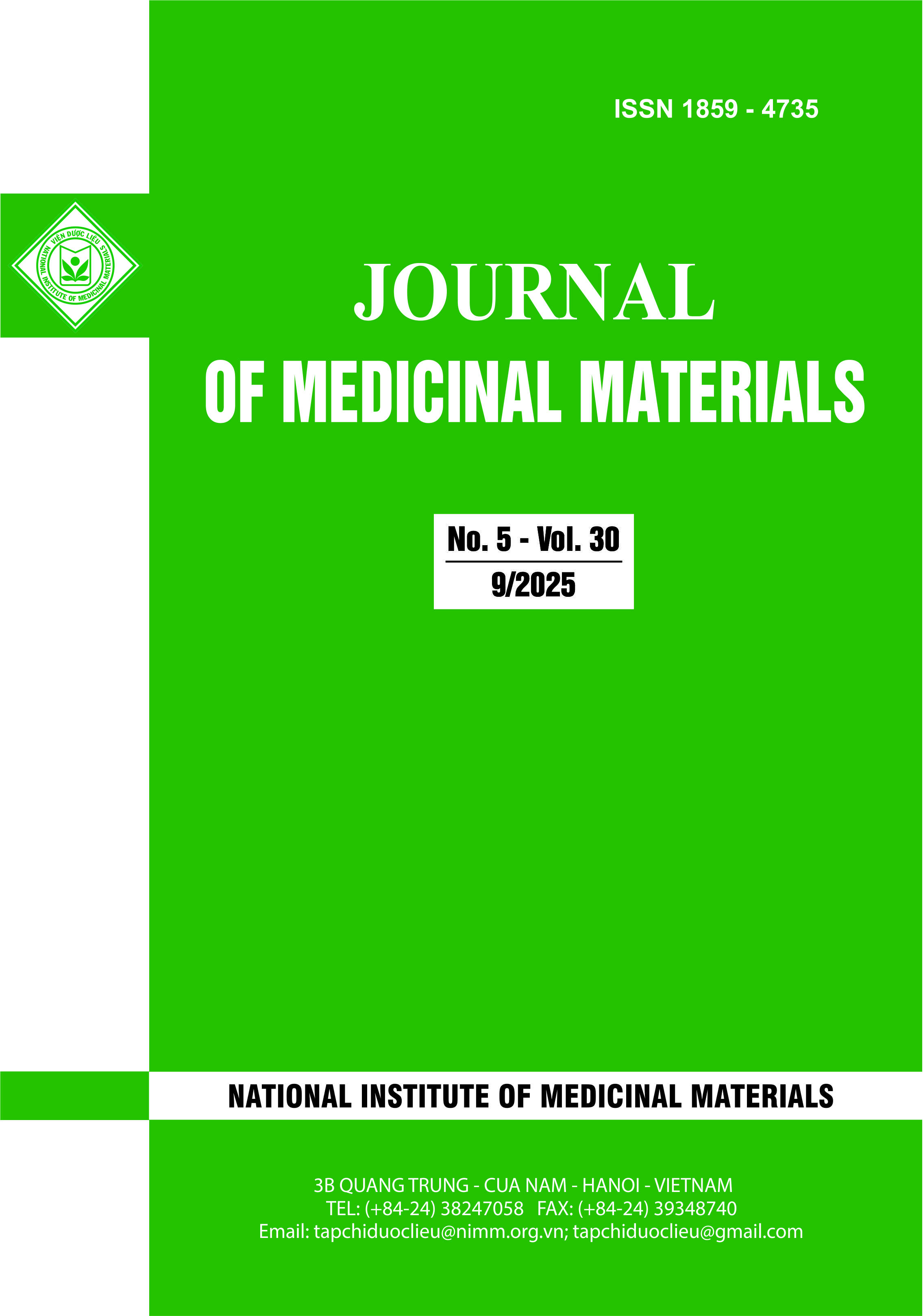
Số lượt xem pdf: 0
Đã Xuất bản
Chuyên mục
Cách trích dẫn
CHEMICAL COMPOSITION AND IN VITRO/IN SILICO ENZYME INHIBITORY ACTIVITIES OF THE LEAF ESSENTIAL OIL OF ACTINODAPHNE PILOSA (LOUR.) MERR. FROM QUANG TRI PROVINCE
DOI:
https://doi.org/10.63240/jmm-nimm.2025.5.170Từ khóa:
Actinodaphne pilosa, Essential oil, Enzyme inhibition, Phytochemical profileTóm tắt
The GC-MS analysis identified 49 components, accounting for 94.98% of the total content. The most abundant chemical class was sesquiterpene hydrocarbons (67.88%), followed by monoterpene hydrocarbons (20.03%), oxygenated sesquiterpenes (6.86%), and oxygenated monoterpenes (0.21%). The major compounds identified were germacrene D (16.73%), β-caryophyllene (11.80%), δ-elemene (11.02%), bicyclogermacrene (10.98%), and β-(E)-ocimene (5.59%). The study confirmed that the A. pilosa leaf essential oil possesses significant inhibitory activity against α-amylase (IC50 = 78.02 ± 2.64 µg/mL) and moderate activity against tyrosinase (IC50 = 631.82 ± 52.18 µg/mL). Notably, its effect on α-amylase was more potent than the standard acarbose (IC50 = 95.71 ± 3.43 µg/mL), while its tyrosinase inhibition was significantly weaker than kojic acid (IC50 = 72.90 ± 2.67 µg/mL). Molecular docking further supported these results, showing that β-caryophyllene (-7.57 kcal/mol), germacrene D (-7.24 kcal/mol), δ-elemene (-6.75 kcal/mol), and bicyclogermacrene (-7.00 kcal/mol) share key binding interactions with the positive control mini-montbretin A, thereby rationalizing their α-amylase inhibitory activity. These findings, representing the first reported enzyme inhibitory activity of this essential oil, suggest its potential for antidiabetic applications.


